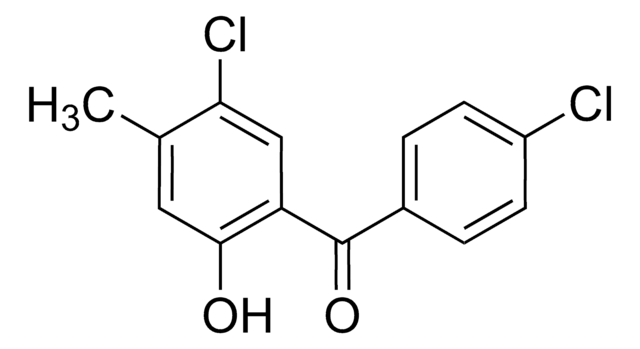M1550000
Dichlorométhane
European Pharmacopoeia (EP) Reference Standard
Synonyme(s) :
Chlorure de méthylène
About This Item
Produits recommandés
Qualité
pharmaceutical primary standard
Densité de vapeur
2.9 (vs air)
Pression de vapeur
24.45 psi ( 55 °C)
6.83 psi ( 20 °C)
Température d'inflammation spontanée
1223 °F
Limite d'explosivité
22 %
Fabricant/nom de marque
EDQM
Indice de réfraction
n20/D 1.424 (lit.)
Point d'ébullition
39.8-40 °C (lit.)
Pf
−95 °C (lit.)
Densité
1.325 g/mL at 25 °C (lit.)
Application(s)
pharmaceutical (small molecule)
Format
neat
Chaîne SMILES
ClCCl
InChI
1S/CH2Cl2/c2-1-3/h1H2
Clé InChI
YMWUJEATGCHHMB-UHFFFAOYSA-N
Vous recherchez des produits similaires ? Visite Guide de comparaison des produits
Description générale
Application
Conditionnement
Autres remarques
Mention d'avertissement
Warning
Mentions de danger
Conseils de prudence
Classification des risques
Carc. 2 - Eye Irrit. 2 - Skin Irrit. 2 - STOT SE 3
Organes cibles
Central nervous system
Code de la classe de stockage
6.1D - Non-combustible acute toxic Cat.3 / toxic hazardous materials or hazardous materials causing chronic effects
Classe de danger pour l'eau (WGK)
WGK 2
Point d'éclair (°F)
does not flash
Point d'éclair (°C)
does not flash
Choose from one of the most recent versions:
Certificats d'analyse (COA)
Sorry, we don't have COAs for this product available online at this time.
If you need assistance, please contact Service Clients
Déjà en possession de ce produit ?
Retrouvez la documentation relative aux produits que vous avez récemment achetés dans la Bibliothèque de documents.
Les clients ont également consulté
Notre équipe de scientifiques dispose d'une expérience dans tous les secteurs de la recherche, notamment en sciences de la vie, science des matériaux, synthèse chimique, chromatographie, analyse et dans de nombreux autres domaines..
Contacter notre Service technique













